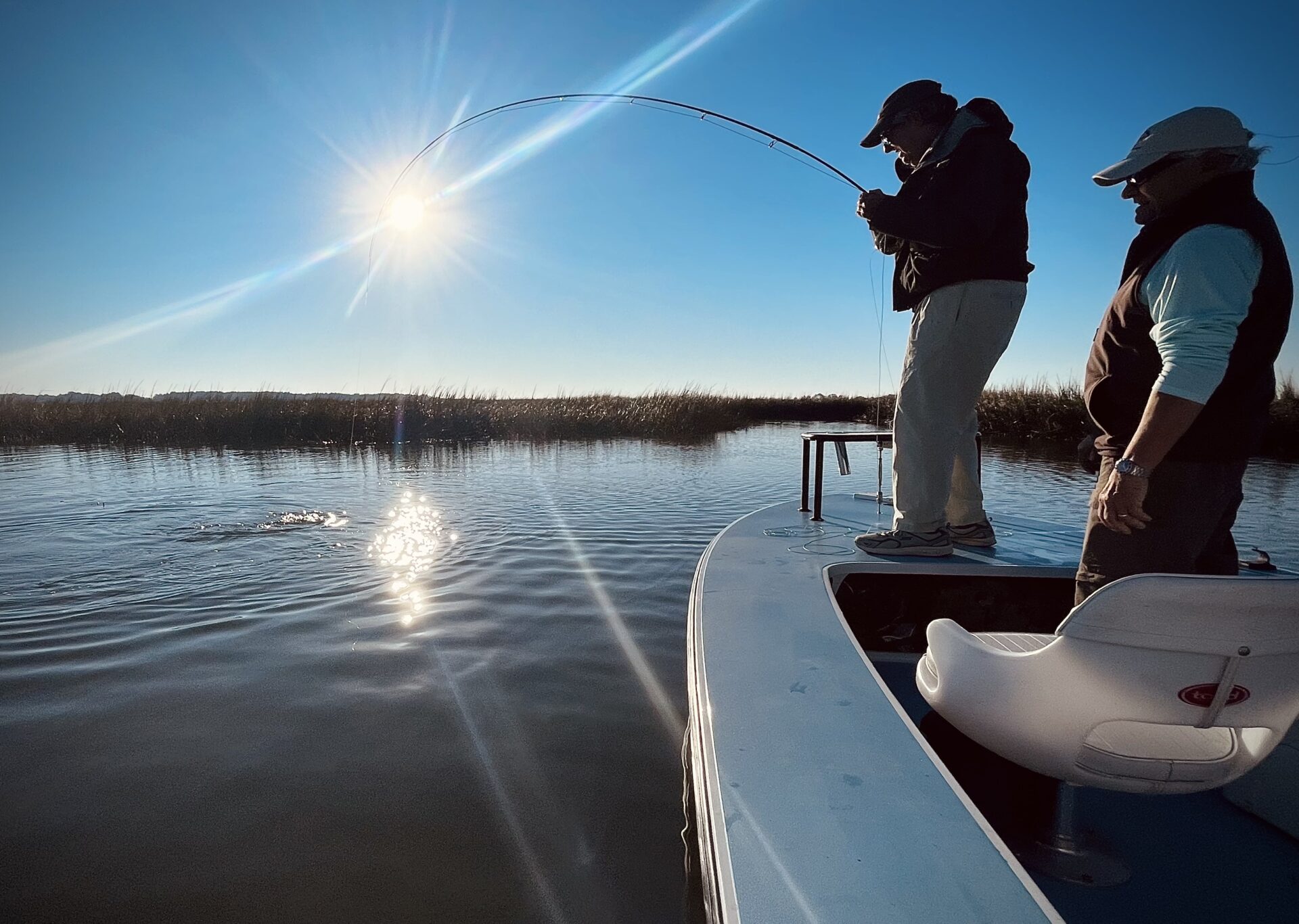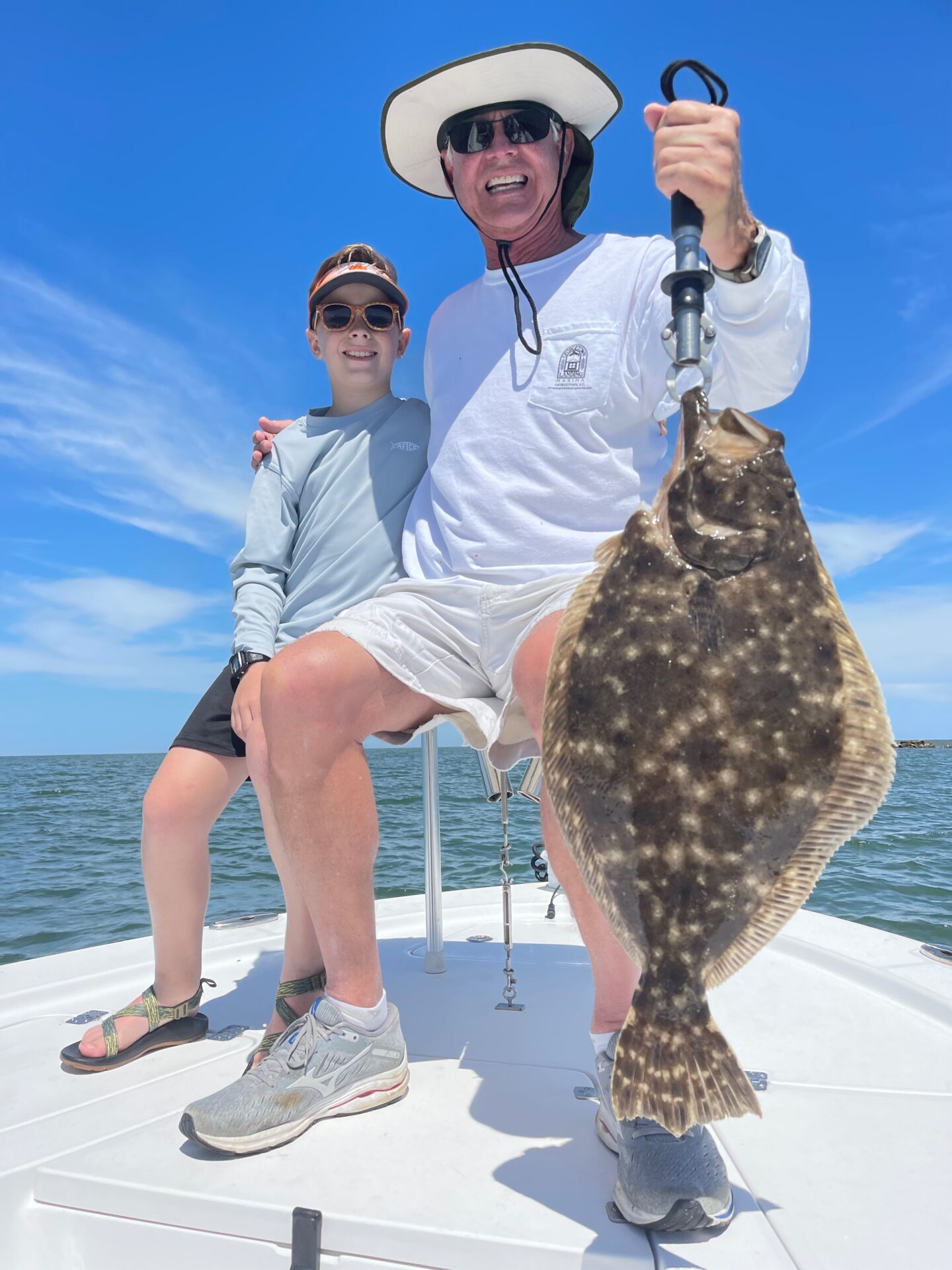Last Updated on June 6, 2025 by Eric Bonneman
Flounder are one of the most recognizable and pursued fish in South Carolina’s inshore waters, especially during the summer months. These fish are flat-bodied, with both eyes on one side of their head, and they lie flush against the bottom to ambush prey. Their natural camouflage allows them to vanish into mud, sand, or shell, making them nearly invisible until they strike. Southern flounder, the main species found in these waters, feed primarily on small fish, shrimp, and crabs and are prized for both their fighting strength and excellent table quality.
Unlike faster, open-water fish, flounder depend on structure and current to bring food within range. They wait motionless near creek mouths, marsh drains, or the edges of oyster beds and strike upward when prey passes overhead. Summer offers prime conditions for this kind of ambush feeding, as warm water increases bait movement and pushes flounder into predictable positions across South Carolina’s extensive estuarine systems.
Where Flounder Feed and Hide
Southern flounder hold tight to structure. Creek mouths, oyster bed edges, marsh drains, and grass flats near drop-offs are all productive zones, especially when fished on a moving tide. They often stage along slight bottom changes or current seams, waiting for bait to funnel past. Mud flats that warm early can draw strikes in the morning, while high tide lets fish push into shallow grass edges. As water recedes, they fall back toward deeper points and cuts.
Not every region along the coast offers this kind of accessible, shallow-water habitat. Winyah Bay stands out because of its wide estuarine reach, with numerous tidal creeks, shell bottom, and soft mud flats. North and South Santee Bays feed into the same general system, sharing the same current flow, structure, and salinity gradients that support strong flounder presence.
Cape Romain remains one of the best undeveloped marsh systems on the coast. Its lack of urban pressure and broad, clean tidal movement create ideal conditions for flounder to feed and stage. Even Murrells Inlet, though more developed, still produces well due to its complex shoreline and strong current exchange.
By contrast, areas like Charleston Harbor or the Edisto estuary have different profiles. Their increased depth, larger boat traffic, and deeper dredged channels limit the kind of slow, structure-oriented fishing that flounder respond to best in summer.

Reading the Tide and Timing the Strike
Tide movement drives everything inshore. On the flood tide, flounder often push into feeding positions near oyster bars, flooded grass, or shallow cuts. On the outgoing tide, they fall back toward marsh drains or points where bait exits into deeper water. The transitional periods are when feeding tends to peak.
During hot afternoons, shallow creeks with little water movement can lose oxygen and push fish into more active zones nearby. Places with strong flow, such as the mouth of a side creek or along a channel drop, continue to produce even in peak heat. Flounder do not leave these systems in summer. They shift locally with the tide and the conditions.
Gear and Rigging for Summer Success
Flounder don’t require heavy tackle, but they demand precision. Use gear that keeps your bait in contact with the bottom and lets you react with control. The following practices are reliable:
-
Use a medium-light spinning rod with 10 to 15 lb braid and a fluorocarbon leader
-
Rig finger mullet or mud minnows on a Carolina rig with just enough weight to maintain contact
-
Choose jigheads between 1/8 and 3/8 oz for soft plastics depending on current and depth
-
Work lures slowly, pausing between hops to trigger strikes
-
Let the fish hold the bait briefly before setting the hook
-
Keep a net ready, as flounder are known for shaking loose boatside
Circle hooks are a good choice for live bait rigs. They reduce deep hooking and tend to set cleanly with steady pressure rather than a hard hookset.

Why These Fish Are Worth the Effort
Flounder reward the fisherman who understands the rhythm of the tide and the structure beneath it. They aren’t flashy or obvious. They sit still, blend in, and wait for you to fish past them with care and patience. But when the hook sets and the rod bends, you know exactly why they’re worth chasing.
South Carolina’s estuarine coast offers one of the most reliable and interesting flounder fisheries in the region. If you take the time to slow down, fish methodically, and let the tide work in your favor, you’ll find flounder in all the right places.
